A dye stealer pregnancy test is a unique type of pregnancy test that is becoming more popular among women who are trying to conceive. This test is designed to detect very high levels of the hormone human chorionic gonadotropin (hCG) in a woman’s urine, which is a sign that she is pregnant. The test is called a “dye stealer” because it is designed to “steal” the dye from the control line, making it appear lighter or even invisible.
Understanding how a dye stealer pregnancy test works requires an understanding of the role of hCG in pregnancy tests. When a woman becomes pregnant, her body begins to produce hCG, which is detectable in her urine.
Most pregnancy tests are designed to detect hCG levels above a certain threshold, which is typically around 25 milli-international units per milliliter (mIU/mL). A dye stealer test, on the other hand, is designed to detect hCG levels above 1000 mIU/mL, which is much higher than most other tests.
Key Takeaways
- A dye stealer pregnancy test is designed to detect very high levels of hCG in a woman’s urine, which is a sign that she is pregnant.
- The test is called a “dye stealer” because it is designed to “steal” the dye from the control line, making it appear lighter or even invisible.
- Dye stealer tests are more sensitive than most other pregnancy tests and can detect hCG levels above 1000 mIU/mL.
Understanding Dye Stealer Pregnancy Test
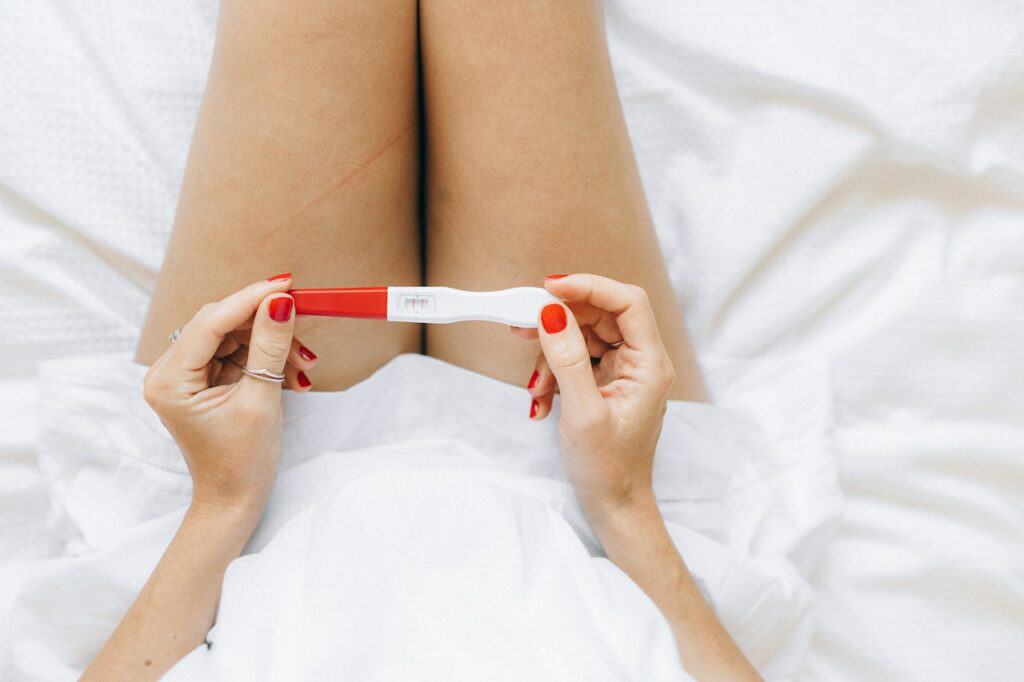
A dye stealer pregnancy test is a type of pregnancy test that indicates a positive pregnancy result by showing a test line that is darker than the control line. In other words, it is a test that detects a high concentration of human chorionic gonadotropin (hCG) hormone in the urine.
When a woman is pregnant, her body produces hCG, which is a hormone that is only present during pregnancy. The level of hCG in the body increases rapidly during the first few weeks of pregnancy, and it is this hormone that most pregnancy tests detect.
A dye stealer test is different from a regular pregnancy test because it is designed to detect very high levels of hCG in the urine. This means that a dye stealer test can be used to confirm a positive pregnancy test result, even if the test line is not as dark as the control line.
It is important to note that not all pregnancy tests are capable of producing a dye stealer result. In fact, most pregnancy tests are not designed to detect such high levels of hCG in the urine. Therefore, if a woman wants to use a dye stealer test, she should look for a test that is specifically designed for this purpose.
In some cases, a dye stealer result may be an indication of a molar pregnancy or other pregnancy anomalies. However, it is important to note that a dye stealer test is not a diagnostic tool and should not be used as a substitute for medical advice or treatment.
In summary, a dye stealer pregnancy test is a type of pregnancy test that detects high levels of hCG in the urine. It is designed to produce a test line that is darker than the control line, indicating a positive pregnancy result. However, it is important to use a test that is specifically designed for this purpose and to seek medical advice if any pregnancy anomalies are suspected.
Role of HCG in Pregnancy Tests
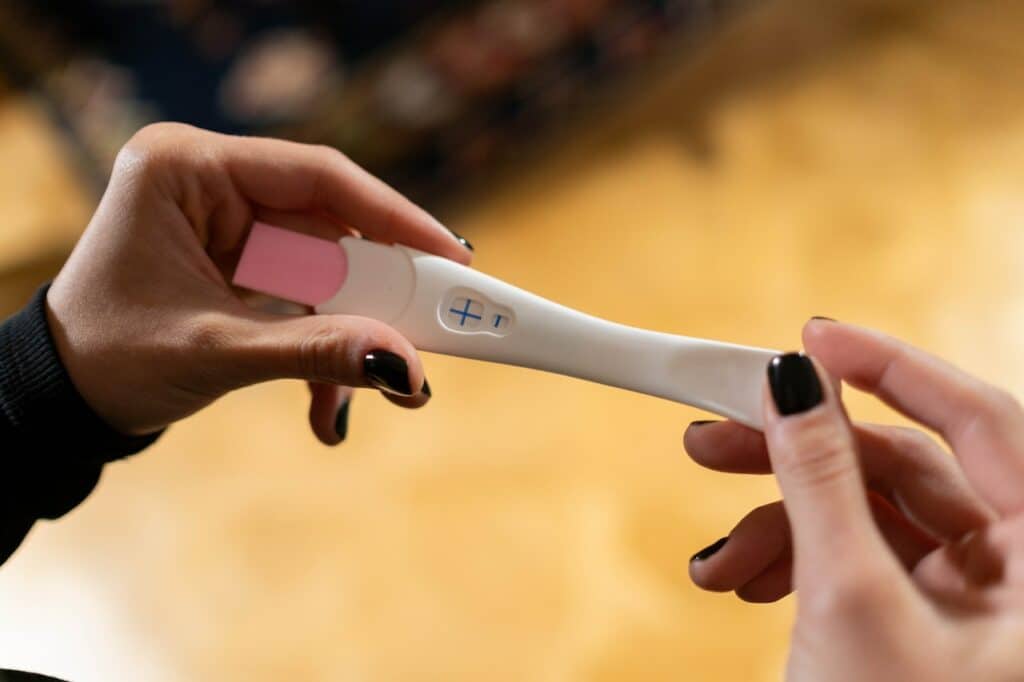
Human chorionic gonadotropin (hCG) is a hormone produced by the placenta during pregnancy. It plays a crucial role in the early stages of pregnancy and is the hormone that pregnancy tests are designed to detect.
When a woman becomes pregnant, her body starts producing hCG, which can be detected in her urine or blood. The level of hCG increases rapidly in the first few weeks of pregnancy, doubling every 48 to 72 hours.
Pregnancy tests work by detecting the presence of hCG in urine or blood. The level of hCG in the body can be measured through a blood test or a urine test. A blood test can detect hCG earlier than a urine test, usually within 6 to 8 days after ovulation. A urine test can detect hCG about 2 weeks after ovulation.
A dye stealer pregnancy test is a type of pregnancy test that detects a very high level of hCG in the urine. It is called a “dye stealer” because it steals the dye from the control line, making it appear lighter. This is a sign that the level of hCG in the urine is very high, which can indicate a multiple pregnancy or a pregnancy that is further along than expected.
Some women may experience pregnancy symptoms before a missed period, such as morning sickness, fatigue, and breast tenderness. However, not all women experience these symptoms, and they can also be caused by other factors. A missed period is a more reliable indicator of pregnancy, and a pregnancy test should be taken if a period is missed.
In summary, hCG is a hormone produced during pregnancy that is detected by pregnancy tests. The level of hCG increases rapidly in the first few weeks of pregnancy, and a high level of hCG can indicate a multiple pregnancy or a pregnancy that is further along than expected. A missed period is a more reliable indicator of pregnancy, and pregnancy tests should be taken if a period is missed.
The Phenomenon of Dye Stealing
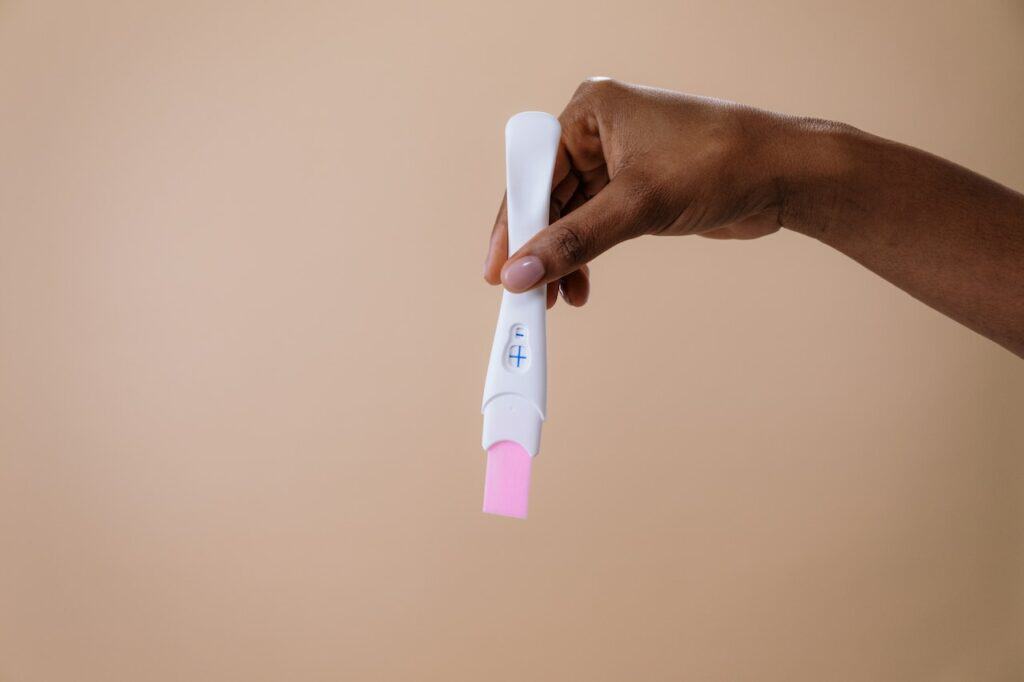
A dye stealer pregnancy test is a test that shows a stronger positive result than the control line. This happens when the pregnancy hormone, hCG, is present in such high levels that it saturates the test and steals the dye from the control line. The result is a darker test line and a lighter control line, indicating a very high level of hCG in the urine.
Dye stealing is a rare phenomenon that occurs in only a small percentage of pregnancies. It is more likely to occur in twin pregnancies or in pregnancies with a molar pregnancy or a placental tumor. However, it is important to note that not all twin pregnancies will result in a dye stealer test, and not all dye stealer tests indicate a twin pregnancy.
The timing of the test is also important. Dye stealing is more likely to occur later in pregnancy, around 18 DPO (days past ovulation), when hCG levels are at their highest. In the early weeks of pregnancy, a dye stealer test may not be a reliable indicator of a viable pregnancy.
It is important to note that a dye stealer test does not necessarily indicate a healthy pregnancy. It is always recommended to confirm a positive pregnancy test with a healthcare provider and to schedule regular prenatal care.
In summary, dye stealing is a rare phenomenon that occurs when hCG levels are very high and saturate the test, resulting in a stronger positive test line than the control line. It is more likely to occur in twin pregnancies or in pregnancies with a molar pregnancy or a placental tumor, but not all dye stealer tests indicate a twin pregnancy. It is important to confirm a positive pregnancy test with a healthcare provider and to receive regular prenatal care.
Dye Stealer Test and Twins

A dye stealer pregnancy test is a test that shows a stronger positive result than expected. It happens when the test line is darker than the control line, indicating a higher level of hCG hormone in the urine. This can happen when a woman is pregnant with twins or multiples.
When a woman is pregnant with twins, her body produces more hCG hormone than in a singleton pregnancy. Therefore, a dye stealer test is more likely to occur in a twin pregnancy. It is important to note that not all women pregnant with twins will have a dye stealer test, and not all women with a dye stealer test are pregnant with twins.
A dye stealer test can occur as early as 10 days after conception and can last for several weeks. It is a good indicator of a healthy pregnancy, as a rising hCG level is a sign that the pregnancy is progressing well.
It is important to confirm a twin pregnancy with an ultrasound, as a dye stealer test is not a definitive diagnosis. Ultrasound can also determine if the twins are identical or fraternal.
In summary, a dye stealer pregnancy test can be an indication of a twin pregnancy, but it is not a definitive diagnosis. It is important to confirm a twin pregnancy with an ultrasound.
Common Pregnancy Tests and Dye Stealing
Pregnancy tests are a common way to determine whether a woman is pregnant or not. There are several types of pregnancy tests available in the market, including urine tests and blood tests. Urine tests are more popular as they are easy to use and can be taken at home.

The most commonly used pregnancy tests are First Response and Pregmate. These tests work by detecting the presence of the hormone human chorionic gonadotropin (hCG) in the urine. hCG is produced by the placenta after a fertilized egg implants in the uterus.
Most pregnancy tests have two lines: a test line and a control line. The control line indicates that the test is working correctly, while the test line indicates whether the woman is pregnant or not. If the test line is darker than the control line, it means that the woman is pregnant.
Dye stealer pregnancy tests are a type of pregnancy test that can indicate a high level of hCG in the urine. These tests work by using a dye that binds to hCG molecules in the urine. When the test line is darker than the control line, it means that the dye has stolen all of the hCG molecules from the control line, indicating a high level of hCG in the urine.
It is important to note that not all pregnancy tests have a dye stealer effect, and not all women will experience a dye stealer effect even if they are pregnant. The dye stealer effect is more likely to occur in women who are further along in their pregnancy and have a higher level of hCG in their urine.
In conclusion, pregnancy tests are a common and easy way to determine whether a woman is pregnant or not. Dye stealer pregnancy tests are a type of pregnancy test that can indicate a high level of hCG in the urine. It is important to follow the instructions on the pregnancy test and consult with a healthcare provider if there are any questions or concerns.
Understanding False Negatives

False negatives are a common occurrence in pregnancy tests, including dye stealer tests. A false negative occurs when a pregnancy test indicates that a woman is not pregnant, even though she is. False negatives can be caused by a variety of factors, including testing too early, using a faulty pregnancy test, or not following the instructions properly.
One of the main causes of false negatives is testing too early. Most pregnancy tests, including dye stealer tests, are designed to detect the presence of the pregnancy hormone human chorionic gonadotropin (hCG) in a woman’s urine. However, hCG levels may not be high enough to be detected in the early stages of pregnancy, leading to a false negative result. It is recommended to wait until after a missed period to take a pregnancy test for the most accurate results.
Using a faulty pregnancy test can also lead to false negatives. It is important to check the expiration date and storage instructions of a pregnancy test before using it. A test that has expired or has been stored improperly may not work properly, leading to inaccurate results.
Not following the instructions properly can also cause false negatives. It is important to read and follow the instructions carefully, including the recommended time frame for reading the results. Reading the results too early or too late can lead to inaccurate results.
It is important to note that even if a pregnancy test indicates a false negative, a woman may still be pregnant. If a woman suspects she may be pregnant despite a negative test result, she should consult with her healthcare provider for further testing and evaluation.
In summary, false negatives can occur in pregnancy tests, including dye stealer tests, for a variety of reasons. Testing too early, using a faulty test, or not following the instructions properly can all contribute to false negative results. It is important to wait until after a missed period to take a pregnancy test and to follow the instructions carefully for the most accurate results.
Healthy Pregnancy and Dye Stealer Test

A healthy pregnancy is a crucial aspect of a woman’s life. It is important to monitor the pregnancy regularly to ensure that the baby is developing correctly and that there are no complications. One way to monitor a healthy pregnancy is through a dye stealer pregnancy test.
A dye stealer test is a pregnancy test that shows a strong positive result. It indicates that the pregnancy hormone (hCG) levels are high, which is a good sign that the pregnancy is progressing well. The test works by detecting the presence of hCG in the urine. If the hCG levels are high, the test will show a strong positive result, which is known as a dye stealer.
A dye stealer test is particularly useful for women who have experienced a missed period or other pregnancy symptoms, such as morning sickness. It is also a good sign that labor and delivery will be successful.
It is important to note that a dye stealer test is not a substitute for medical advice. Women should still consult with their healthcare provider to ensure that they receive proper prenatal care. Additionally, medication should not be taken without consulting a healthcare provider.
In conclusion, a dye stealer pregnancy test is a useful tool for monitoring a healthy pregnancy. It provides a strong positive result, indicating that the pregnancy is progressing well. However, it is important to remember that a dye stealer test is not a substitute for medical advice and women should still consult with their healthcare provider for proper prenatal care.
Community Discussions and Dye Stealer Test
The topic of the dye stealer test has been discussed extensively in various online communities, including pregnancy and parenting forums, social media groups, and registry communities. Members of these communities have shared their experiences and opinions on the accuracy and reliability of the dye stealer test.

Some members have reported getting a negative result on their regular pregnancy test, only to get a positive result on the dye stealer test a few days later. They believe that the dye stealer test is more sensitive and can detect lower levels of the pregnancy hormone hCG than regular pregnancy tests.
However, others have expressed skepticism about the dye stealer test, pointing out that it is not a standardized test and there is no clear definition of what constitutes a dye stealer result. They caution against relying solely on the dye stealer test and recommend confirming the results with a healthcare provider.
Despite the differing opinions, many members agree that the dye stealer test can provide peace of mind for those who are anxious about their pregnancy. Some even use it as a way to track the progression of their pregnancy by testing every few days and observing the intensity of the dye steal.
Overall, the community discussions on the dye stealer test highlight the importance of being informed and educated about pregnancy testing options. While the dye stealer test may be a useful tool for some, it is not a substitute for medical advice and care.
Registry Builder and Baby Products

Once you have confirmed your pregnancy with a dye stealer pregnancy test, it’s time to start thinking about the baby products you will need. A registry builder can be a helpful tool to ensure that you have everything you need for your new arrival.
Many retailers offer registry builders that allow you to create a list of items you will need for your baby. You can share this list with family and friends who want to purchase gifts for your baby shower or to welcome your new addition. A registry builder can also help you keep track of what items you still need to purchase.
When it comes to baby products, there are many options to choose from. It’s important to consider the needs of your family and your lifestyle when selecting products. For example, if you plan to breastfeed, you may want to invest in a high-quality breast pump. If you have a toddler at home, you may want to consider purchasing a double stroller to accommodate both children.
In addition to baby products, many retailers offer “mom editions” of their registry builders. These editions include items that are specifically designed to make life easier for new moms. For example, a nursing pillow can help make breastfeeding more comfortable, while a baby carrier can allow you to keep your hands free while bonding with your baby.
Overall, a registry builder can be a helpful tool for new parents. It allows you to keep track of the items you need for your new arrival and can help you prepare for the exciting journey ahead.
Getting Pregnant and Fertility
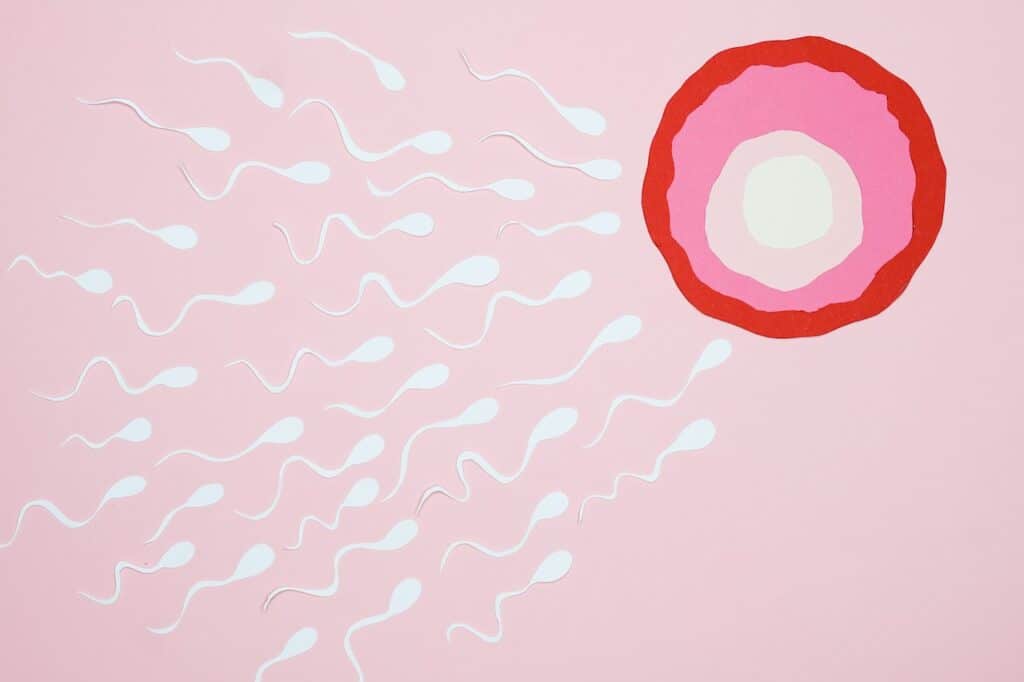
When a couple is trying to conceive, there are a few things they need to know about getting pregnant and fertility. Fertility is the ability to conceive a child, and it is influenced by many factors, including age, overall health, and lifestyle. Here are some important things to keep in mind:
-
Ovulation: Ovulation is the process of releasing an egg from the ovary. This typically occurs once a month, around day 14 of a 28-day menstrual cycle. However, every woman’s cycle is different, and some women may ovulate earlier or later than day 14. It is important to track ovulation to increase the chances of getting pregnant.
-
Pregnancy: Pregnancy occurs when a fertilized egg implants in the lining of the uterus. It is important to note that not all pregnancies are planned, and some women may experience pregnancy symptoms before they even miss a period. These symptoms can include fatigue, nausea, and breast tenderness.
-
Missed period: A missed period is often the first sign of pregnancy. However, there can be other reasons for a missed period, including stress, weight changes, and changes in birth control. It is important to take a pregnancy test if a period is missed.
-
Morning sickness: Morning sickness is a common symptom of pregnancy, and it can occur at any time of the day. It is characterized by nausea and vomiting, and it usually goes away after the first trimester.
Overall, getting pregnant and fertility are complex topics, and there are many factors that can influence them. However, by tracking ovulation, paying attention to pregnancy symptoms, and taking a pregnancy test if a period is missed, couples can increase their chances of conceiving.
Pregnancy Anomalies
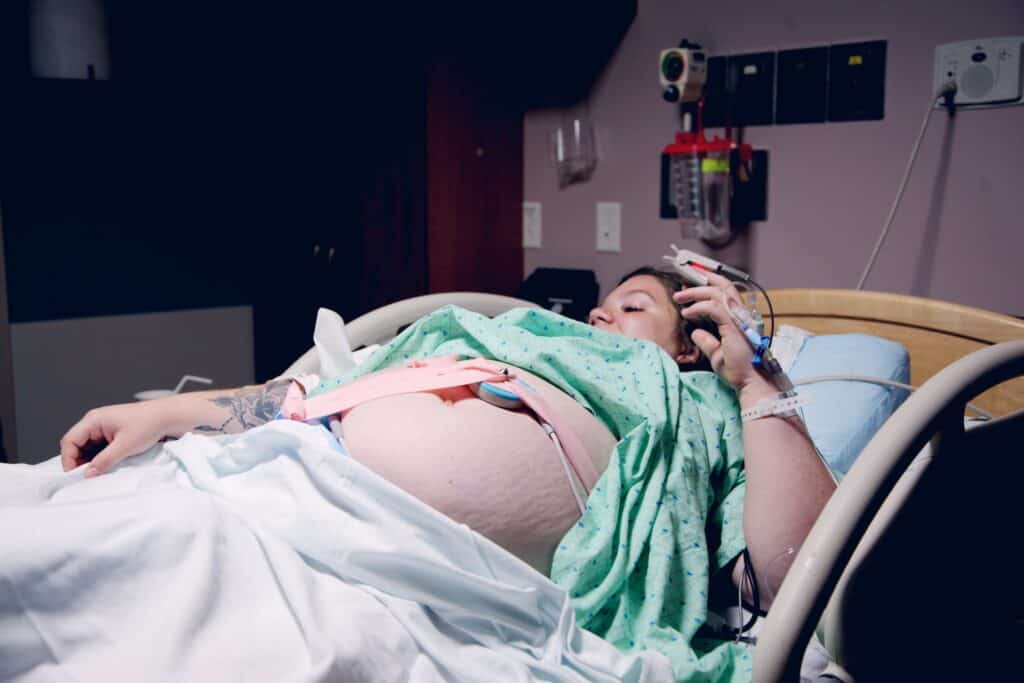
Pregnancy is a complex and delicate process that can be affected by various anomalies. These anomalies can range from minor issues to severe complications that require medical attention.
One of the most common pregnancy anomalies is a chemical pregnancy. This occurs when a fertilized egg implants in the uterus but fails to develop properly. Chemical pregnancies often go undetected as they result in a very early miscarriage, sometimes before a missed period.
Another anomaly that can occur during pregnancy is the presence of menstrual cramps. These cramps can be caused by the uterus stretching and growing to accommodate the developing fetus. However, if these cramps are severe or accompanied by bleeding, it may be a sign of a more serious complication.
Pregnancy brain is another anomaly that some women experience during pregnancy. This refers to a temporary decline in cognitive function, memory, and concentration. While it is not fully understood why this occurs, it is believed to be related to hormonal changes in the body.
Morning sickness is a common pregnancy symptom that affects many women. However, in some cases, it can be severe enough to require medical attention. Hyperemesis gravidarum is a condition that causes severe nausea and vomiting during pregnancy and can lead to dehydration and weight loss.
In some cases, pregnancy test anomalies can occur. One such anomaly is a dye stealer pregnancy test, which occurs when the test line becomes darker than the control line. While this may seem like a positive result, it can actually be a sign of a chemical pregnancy or other complication.
Overall, it is important for pregnant women to be aware of these anomalies and to seek medical attention if they experience any concerning symptoms. By working closely with their healthcare provider, women can ensure a safe and healthy pregnancy for themselves and their babies.
Home Remedies and Pregnancy

Pregnancy can be an exciting, yet challenging time for expectant mothers. While there are many joys that come with pregnancy, there are also many challenges, including morning sickness, missed periods, and other pregnancy symptoms. Fortunately, there are many home remedies that can help alleviate these symptoms and make pregnancy more comfortable.
One of the most common pregnancy symptoms is morning sickness. This can be a challenging and uncomfortable experience for many women. Fortunately, there are many home remedies that can help alleviate the symptoms of morning sickness. Some of these remedies include:
- Ginger tea: Ginger has been shown to be effective in reducing the symptoms of morning sickness. Drinking ginger tea can help alleviate nausea and vomiting.
- Peppermint: Peppermint is another natural remedy that can help alleviate the symptoms of morning sickness. Drinking peppermint tea or sucking on peppermint candies can help reduce nausea and vomiting.
- Eating small, frequent meals: Eating small, frequent meals throughout the day can help keep blood sugar levels stable and reduce the symptoms of morning sickness.
Another common pregnancy symptom is a missed period. While a missed period can be an early sign of pregnancy, it can also be caused by other factors, such as stress or hormonal imbalances. If you have missed a period, it is important to speak with your healthcare provider to determine the cause. In the meantime, there are some home remedies that can help regulate your menstrual cycle and promote hormonal balance. Some of these remedies include:
- Drinking plenty of water: Staying hydrated is important for overall health and can help regulate your menstrual cycle.
- Eating a healthy diet: Eating a balanced diet that includes plenty of fruits, vegetables, and whole grains can help promote hormonal balance and regulate your menstrual cycle.
- Getting enough sleep: Getting enough sleep is important for overall health and can help regulate your menstrual cycle.
Finally, it is important to remember that pregnancy is a time when your body needs extra nutrients and energy. Eating a healthy diet that includes plenty of fruits, vegetables, and whole grains can help ensure that you and your baby are getting the nutrients you need. Some healthy snack options include:
- Fresh fruit: Fresh fruit is a great snack option that is packed with vitamins and minerals.
- Nuts and seeds: Nuts and seeds are a great source of protein and healthy fats.
- Yogurt: Yogurt is a great source of calcium and protein.
Overall, there are many home remedies that can help alleviate the symptoms of pregnancy and make this exciting time more comfortable. By eating a healthy diet, staying hydrated, and getting enough sleep, expectant mothers can help ensure that they and their babies are healthy and happy.
Expensive Products and Pregnancy
Pregnancy is a time when many women want to ensure they are taking the best care of themselves and their growing baby. This often leads to seeking out expensive products that promise to provide the best quality and care. However, it’s important to remember that not all expensive products are necessary or even beneficial.
One area where women often feel pressure to spend more money is on pregnancy tests. Dye stealer pregnancy tests, in particular, can be quite expensive. These tests detect the pregnancy hormone, human chorionic gonadotropin (hCG), at a lower level than traditional pregnancy tests, giving a positive result earlier in the pregnancy.
While early detection may be desirable for some women, it’s important to note that a negative result on a traditional pregnancy test does not necessarily mean a woman is not pregnant. It may simply mean that the test was taken too early in the pregnancy for hCG levels to be detectable.
In addition to expensive pregnancy tests, there are also many expensive baby products on the market. While some of these products may be helpful, it’s important to research and prioritize which items are truly necessary. For example, a high-end stroller may look nice, but a more affordable option may work just as well.
Ultimately, the decision to purchase expensive products during pregnancy and for the baby is a personal one. It’s important to weigh the benefits and costs of each item and prioritize based on individual needs and budget.
First Year of Baby

The first year of a baby’s life is full of milestones and changes. From the first smile to the first steps, parents will witness their baby grow and develop at a rapid pace.
During the first few weeks of life, babies will sleep for most of the day and night, waking up only for feedings and diaper changes. As they grow, they will start to become more active, spending more time awake and alert.
At around 4-6 months, babies will start to roll over, sit up, and reach for toys. They will also begin to babble and make sounds, which will eventually turn into their first words.
Around 6-8 months, babies will start to crawl and explore their surroundings. They will also begin to develop their fine motor skills, such as picking up small objects with their fingers.
By the end of the first year, most babies will be able to stand and take their first steps. They will also start to develop their own personalities and preferences.
As a family, it is important to provide a safe and nurturing environment for the baby to grow and develop. This includes creating a consistent routine for feeding, sleeping, and playtime, as well as providing plenty of love and attention.
Overall, the first year of a baby’s life is an exciting and rewarding time for parents and families. Watching a baby grow and develop into their own unique person is truly a joyous experience.
News and Developments in Pregnancy Tests

Pregnancy tests have come a long way since their inception. Today, there are several types of pregnancy tests available on the market, including digital tests, early detection tests, and dye stealer tests.
In recent years, dye stealer pregnancy tests have gained popularity among women trying to conceive. These tests work by detecting the presence of the pregnancy hormone, hCG, in a woman’s urine. If the hCG levels are high enough, the test line will “steal” the dye from the control line, resulting in a darker test line.
One of the most significant developments in pregnancy tests is the ability to detect pregnancy earlier than ever before. Early detection tests can detect hCG levels as low as 6.5 mIU/mL, which is up to five days before a missed period. This early detection can provide women with peace of mind and allow them to start prenatal care earlier.
Another exciting development in pregnancy tests is the ability to track hCG levels over time. Some tests come with multiple strips, allowing women to test their hCG levels over a few days to see if they are increasing as expected. This feature can be helpful for women who have experienced miscarriages or ectopic pregnancies in the past.
Overall, the advancements in pregnancy tests have made them more accurate, reliable, and convenient for women. Whether a woman is trying to conceive or wants to confirm a suspected pregnancy, there is a test available to meet her needs.
Also, check out a related post: Do OB/GYNs Drug Test During Pregnancy
Frequently Asked Questions
What is the significance of a dye stealer pregnancy test?
A dye stealer pregnancy test is significant because it indicates a high level of human chorionic gonadotropin (hCG) in the body. This hormone is produced by the placenta after a fertilized egg implants in the uterus. A dye stealer pregnancy test occurs when the test line is darker than the control line, which means that there is an abundance of hCG in the body.
When should you expect to see a dye stealer on a pregnancy test?
A dye stealer on a pregnancy test can typically be seen when hCG levels are very high, usually around 6-8 weeks into the pregnancy. However, this can vary depending on the individual and the sensitivity of the pregnancy test.
Is a dye stealer always a good sign during pregnancy?
While a dye stealer is generally a positive sign during pregnancy, it is not always a guarantee of a healthy pregnancy. In some cases, it can indicate a molar pregnancy or an ectopic pregnancy. It is important to consult with a healthcare professional if you have any concerns.
What does it mean if you don’t get a dye stealer on a pregnancy test?
If you do not get a dye stealer on a pregnancy test, it does not necessarily mean that you are not pregnant. It could simply mean that your hCG levels are not high enough yet to produce a dye stealer. It is recommended to wait a few days and take another test to see if hCG levels have increased.
How much HCG is required to get a dye stealer on a pregnancy test?
The amount of hCG required to get a dye stealer on a pregnancy test can vary depending on the sensitivity of the test. However, generally speaking, hCG levels need to be quite high to produce a dye stealer.
Should you continue testing after getting a dye stealer on a pregnancy test?
Once you have received a dye stealer on a pregnancy test, it is not necessary to continue testing. However, it is important to schedule an appointment with a healthcare professional to confirm the pregnancy and ensure that everything is progressing as it should.

Iesha is a loving mother of 2 beautiful children. She’s an active parent who enjoys indoor and outdoor adventures with her family. Her mission is to share practical and realistic parenting advice to help the parenting community becoming stronger.
